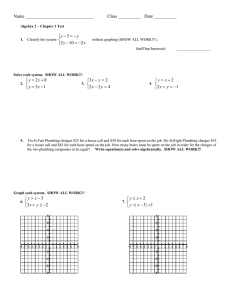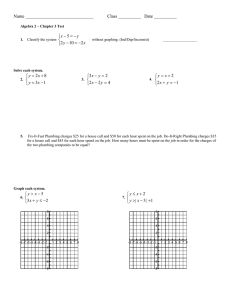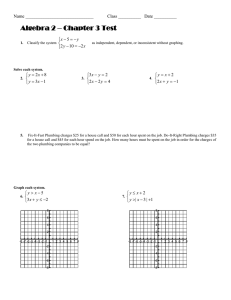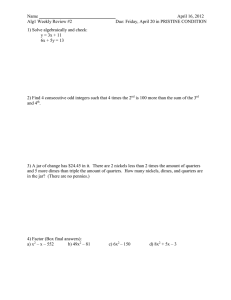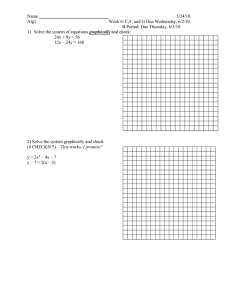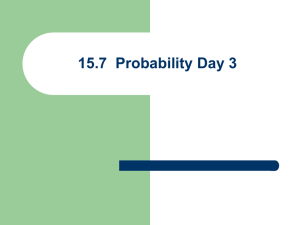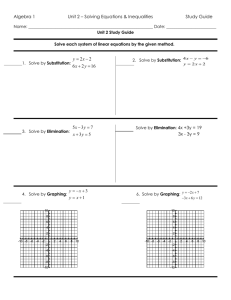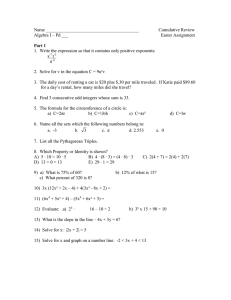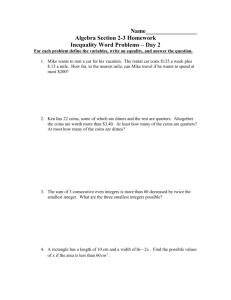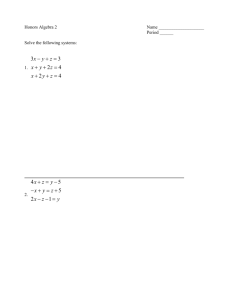Algebra 2 – Chapter 3 Test Name
advertisement
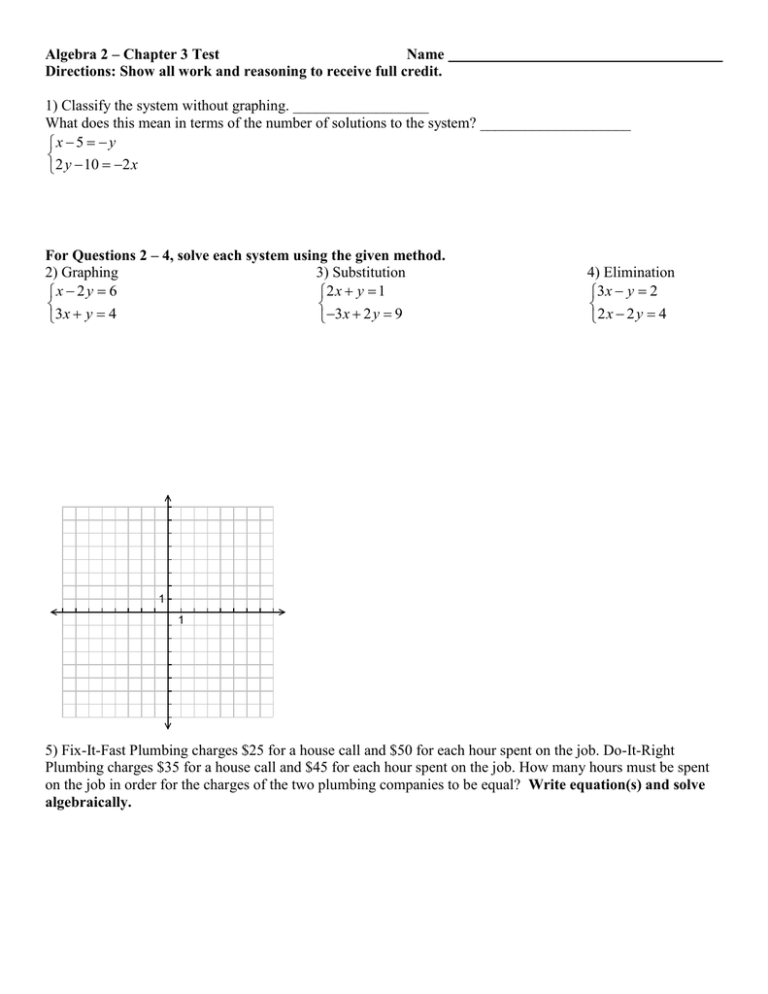
Algebra 2 – Chapter 3 Test Name Directions: Show all work and reasoning to receive full credit. 1) Classify the system without graphing. __________________ What does this mean in terms of the number of solutions to the system? ____________________ x 5 y 2 y 10 2 x For Questions 2 – 4, solve each system using the given method. 2) Graphing 3) Substitution x 2 y 6 2 x y 1 3x y 4 3x 2 y 9 4) Elimination 3x y 2 2 x 2 y 4 1 1 5) Fix-It-Fast Plumbing charges $25 for a house call and $50 for each hour spent on the job. Do-It-Right Plumbing charges $35 for a house call and $45 for each hour spent on the job. How many hours must be spent on the job in order for the charges of the two plumbing companies to be equal? Write equation(s) and solve algebraically. For Questions 6 & 7, graph each system. 2 y x 4 7) 1 y | x 2 | 4 2 2 x 3 y 15 6) 6 x 2 y 4 8 8 6 6 4 4 2 2 -8 -7 -6 -5 -4 -3 -2 -1 1 2 3 4 5 6 7 8 -8 -7 -6 -5 -4 -3 -2 -1 1 2 3 4 5 6 7 8 -2 -2 -4 -4 -6 -6 -8 -8 For Questions 8 & 9, graph each system of constraints. Find all vertices. Evaluate the objective function at each vertex to find the maximum or minimum value. x 3 2 x y 6 8) y 7 9) x y 4 x 0, y 0 x 0, y 0 Maximum for P 2 x 3 y Minimum for C x 4 y (other than (0, 0)) 10 10 9 9 8 8 7 7 6 6 5 5 4 4 3 3 2 2 1 1 1 2 3 4 5 6 7 8 9 10 1 2 3 4 5 6 7 8 Vertices: Vertices: Maximum: Minimum (other than (0, 0)): 9 10 10a) Jerome walks from 10 and 20 minutes each day and runs from 25 and 35 minutes each day. He never spends more than 50 minutes walking and running together. Define your variables, write the constraints, graph, and find all vertices. 50 45 40 35 30 25 20 15 10 5 5 10 15 20 25 30 35 40 45 50 10b) Jerome burns 4 cal/min walking and 10 cal/min running. Write the objective function for this problem. How much time should be spent on each activity to maximize the number of calories he burns? For Questions 11 & 12, solve each system of equations. 5 x 4 y z 1 11) 2 x 2 y z 1 x y z 2 x 2 y 1 12) x 3 y z 0 z x 9 Extra Credit: Jennifer has ten fewer quarters than dimes and five fewer nickels than quarters. The total value of the coins is $4.75. How many quarters, nickels, and dimes does she have? (q=quarters, d=dimes, n=nickels) SOLVE USING ALGEBRAIC TECHNIQUES FOR SOLVING THREE-VARIABLE SYSTEMS.
